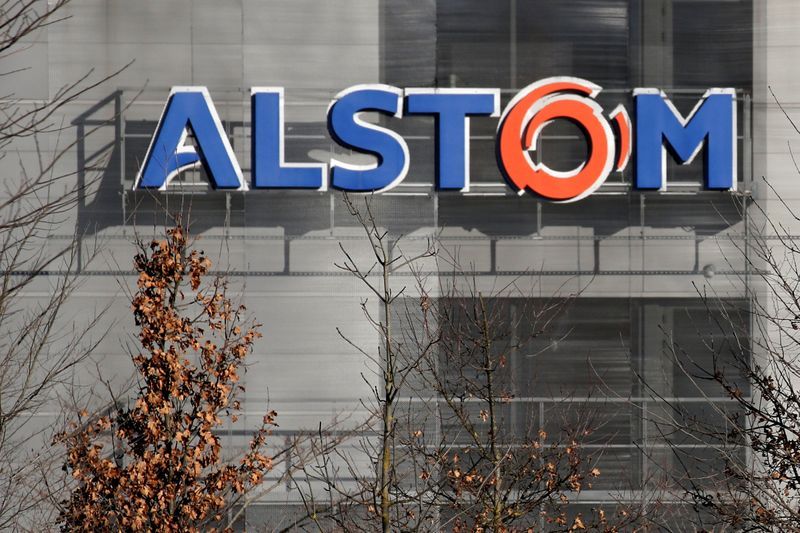(BFM Bourse) – The British bank began monitoring the stock with advice to “underweight” and a price target of 16.5 euros. The establishment is concerned about the railway equipment manufacturer’s cash generation, its debt, a slowdown in orders and even a downgrade from Moody’s.
Since the takeover of the Canadian Bombardier Transport, finalized in early 2021, Alstom has been on a long journey through the stock market. The stock has lost more than 45% over three years and has done almost nothing since the start of the year (+0.7%), despite positive momentum last spring.
The railway equipment manufacturer must currently execute and remove from its order book difficult contracts inherited from Bombardier (in Switzerland and the United Kingdom, for example) with negative margins. According to the company’s projections, these contracts will still represent 1.7 billion euros in its order book for the 2023-2024 financial year, a figure which will fall to 1 billion in the following financial year. The group must also reassure each half-year about its cash generation, under close market surveillance, while its net debt exceeds $2 billion.
However, this Wednesday, the Barclays bank threw a stone in the garden of the railway equipment manufacturer. The British establishment thus initiated its coverage on the action with a recommendation to “underweight” (the equivalent of “sell” at Barclays) and a price target of 16.5 euros (i.e. practically -32% per share). compared to the closing price on Tuesday evening).
Unsurprisingly, Alstom shares are suffering this Wednesday. The stock dropped 3.5% to 23.23 euros, showing the biggest drop in the CAC 40.
>> Access our exclusive graphic analyses, and gain insight into the Trading Portfolio
A less promising “green transport”?
Barclays recognizes the efforts that management has made to execute the least financially performing contracts in its order book, judging that the group has been able to navigate “in troubled waters”. But the British bank is concerned about several elements.
In terms of activity, one of Alstom’s stock market attractions remains its dynamic order intake, driven by the plans of many countries to develop rail, a mode of transport that is inherently the least CO2 emitting. But this idyllic picture is put into perspective by the bank. “Perceptions around “green” transport and the lengthening of the order book duration mask the cyclical nature of the rail market,” points out Barclays.
The establishment emphasizes that order intake fell last year and judges that the peak of the cycle has now passed.
Barclays is also concerned about Alstom’s cash generation trajectory. The group reported positive free cash flow of €199 million last year. But the establishment uses a different definition of cash generation than the company. And on this basis, Barclays arrives at a slightly negative figure. Still based on this definition, the bank estimates that the group will burn cash over the next three financial years (around 580 million euros cumulatively, according to its forecasts).
A risk of credit rating downgrade?
Barclays also anticipates an improvement in profitability that is less than anticipated by Alstom and the consensus of analysts. It expects an adjusted operating margin of less than 7% for the financial year ending in March 2026, compared to more than 8% for the consensus and a range between 8% and 10% for Alstom over the same horizon. This is particularly due to persistent labor and component costs.
Another point: the company’s balance sheet. Barclays considers its debt to be high. And the establishment considers that Alstom risks a downgrade from Moody’s. In May the rating agency lowered Alstom’s rating by one notch to “Baa3” from “Baa2” previously, the last rating in the “investment” category. Remember that the company has made the defense of its “investment” category credit rating a priority. But Moody’s had attached a “stable” (and not “negative”) outlook to this rating and Alstom had assured that this decision had no impact on its financial trajectory.
Barclays emphasizes that it is critical for Alstom to maintain this investment grade rating “because a downgrade could make short-term financing (including commercial paper) and guarantees linked to the project more expensive”. To do this, she emphasizes that Moody’s will need to see an improvement in margins, a significant reduction in debt leverage and positive cash generation over the next 12-18 months, all risky objectives, according to the bank.
“We believe that the market overestimates the growth trajectory of the end market (a market largely focused on replacement)” of the group and “underestimates the risks linked to Alstom’s activity and balance sheet as well as the strength and quality of its results, concludes Barclays.
Julien Marion – ©2023 BFM Bourse
Are you following this action?
Receive all the information on ALSTOM in real time:
